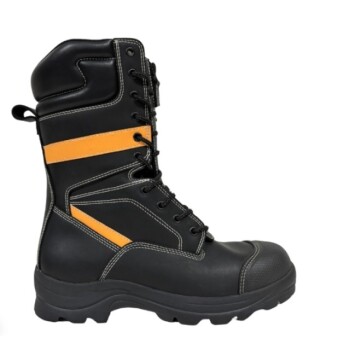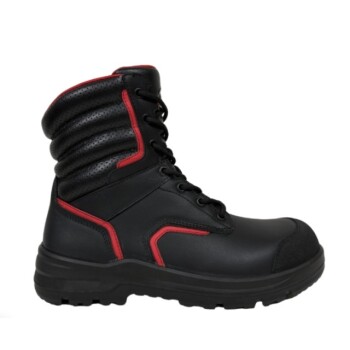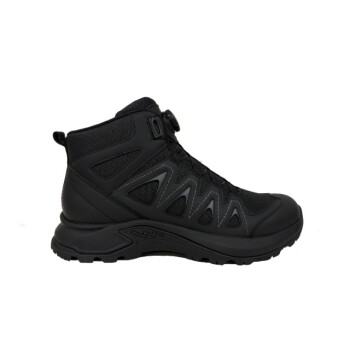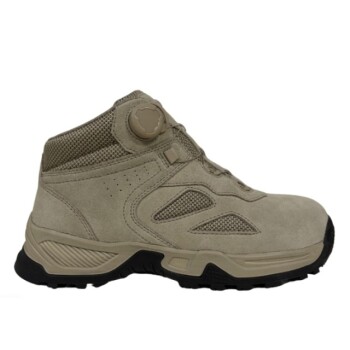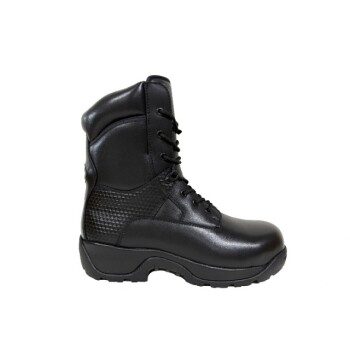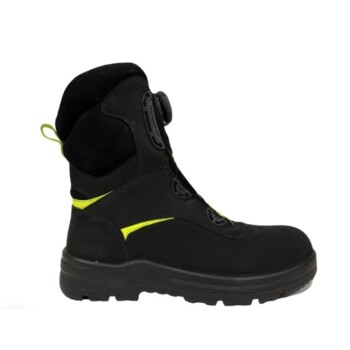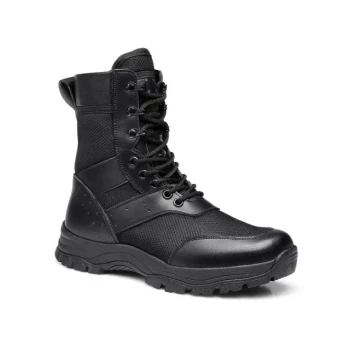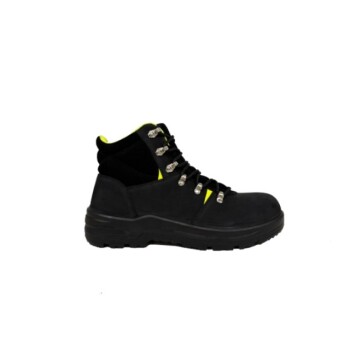The most effective way to break in boots is through a patient, gradual process that allows the material, particularly leather, to mold naturally to the unique shape of your foot. The core method involves wearing the boots for short periods with thick socks, manually flexing them to soften key areas, and using a leather conditioner to increase pliability. This approach prioritizes the long-term health of the boots and prevents the foot pain associated with rushing the process.
The goal is not to force a boot into submission but to guide it through a natural adaptation process. Shortcuts often damage the material and lead to a poor fit, while patience ensures a custom-molded fit that provides years of comfort.

The Foundational Principle: Gradual Adaptation
Breaking in a quality pair of boots is a partnership between your foot and the boot's material. The heat and pressure from your foot are the primary tools, and your job is to apply them incrementally.
Start at Home
Before wearing your new boots outside, wear them indoors for a few hours at a time. This serves two critical purposes.
First, it allows you to confirm the sizing is correct without scuffing the soles, preserving your ability to return them if you feel a fundamental fit issue.
Second, it begins the gentle process of stretching the leather with your body heat in a low-impact environment.
The Role of Heat and Pressure
Wearing thick socks, or even two pairs of standard socks, is the single most important technique. This method stretches the leather from the inside out.
The added bulk creates gentle, consistent pressure on potential tight spots, such as the width or instep. The heat generated by your foot makes the leather more pliable and receptive to this molding process.
Manually Assisting the Process
Your boots are designed to bend at specific flex points, primarily at the ankle and the ball of the foot.
After a session of wearing them, take the boots off and manually bend and flex these areas. This action mimics the stress of walking and helps loosen the stiff leather fibers more quickly than walking alone.
Tools and Conditioners: When and How to Use Them
While not always necessary for softer leathers, conditioners can significantly accelerate the break-in period for stiffer work or hiking boots.
The Purpose of Leather Conditioner
A high-quality leather conditioner or oil works by penetrating the leather's pores and nourishing its fibers.
This replenishment makes the material softer and more supple, allowing it to stretch and conform to your foot with less resistance.
Proper Application
Choose a conditioner appropriate for your boot’s specific type of leather.
Apply a light, even coat, paying special attention to the seams and flex points. Allow the conditioner to absorb fully before wearing the boots again. Over-conditioning can make leather too soft and compromise its structural support.
Common Pitfalls and Why to Avoid Them
In an effort to speed up the process, many people turn to "hacks" that can cause irreparable damage to their boots.
The Myth of Water Soaking
A common but risky method is to soak boots in water and wear them until they dry. While this can rapidly form the leather to your foot, it does so at a great cost.
Water strips the leather of its natural oils, which can lead to it becoming brittle and cracking once dry. It can also damage the glues and materials used in the boot's construction.
The Danger of Extreme Heat
Using a hairdryer or placing boots near a heat source is another shortcut to avoid.
Concentrated, high heat can permanently shrink the leather or dry it out too quickly, causing it to crack. It offers a quick stretch but severely compromises the boot's long-term durability.
Making the Right Choice for Your Goal
Your strategy should adapt slightly based on the stiffness of your boots and your sensitivity to pressure points.
- If your primary focus is breaking in stiff work or hiking boots: Commit to the full, slow process. Wear them at home daily with thick socks, manually flex them after each wear, and apply a light coat of conditioner after the first week.
- If your primary focus is breaking in softer cowboy or dress boots: The process is often faster. Focus primarily on wearing them with thick socks for several hours at a time until the leather relaxes.
- If you experience specific, painful pressure points: Isolate these areas. Apply a small amount of extra conditioner to that spot and focus your manual flexing there to encourage the leather to give.
Investing a couple of weeks in a proper break-in period is the best way to ensure your boots become a comfortable, long-lasting extension of your feet.
Summary Table:
| Key Step | Purpose | Key Tool/Method |
|---|---|---|
| Wear at Home | Confirm fit, start gentle stretching | Thick socks, body heat |
| Manual Flexing | Loosen stiff leather fibers | Bending at ankle and ball of foot |
| Use Conditioner | Soften and nourish leather | High-quality leather conditioner/oil |
| Avoid Shortcuts | Prevent permanent damage | Steer clear of water soaking & extreme heat |
Need a Durable, Comfortable Boot That's Easier to Break In?
As a large-scale manufacturer, 3515 produces a comprehensive range of high-quality footwear for distributors, brand owners, and bulk clients. Our production capabilities encompass all types of durable work boots, hiking boots, and casual footwear designed with comfort and longevity in mind. We understand that a proper break-in starts with quality materials and construction.
Let us help you provide your customers with superior boots. Contact our team today to discuss your manufacturing needs and discover how we can deliver reliable, comfortable footwear for your market.
Visual Guide
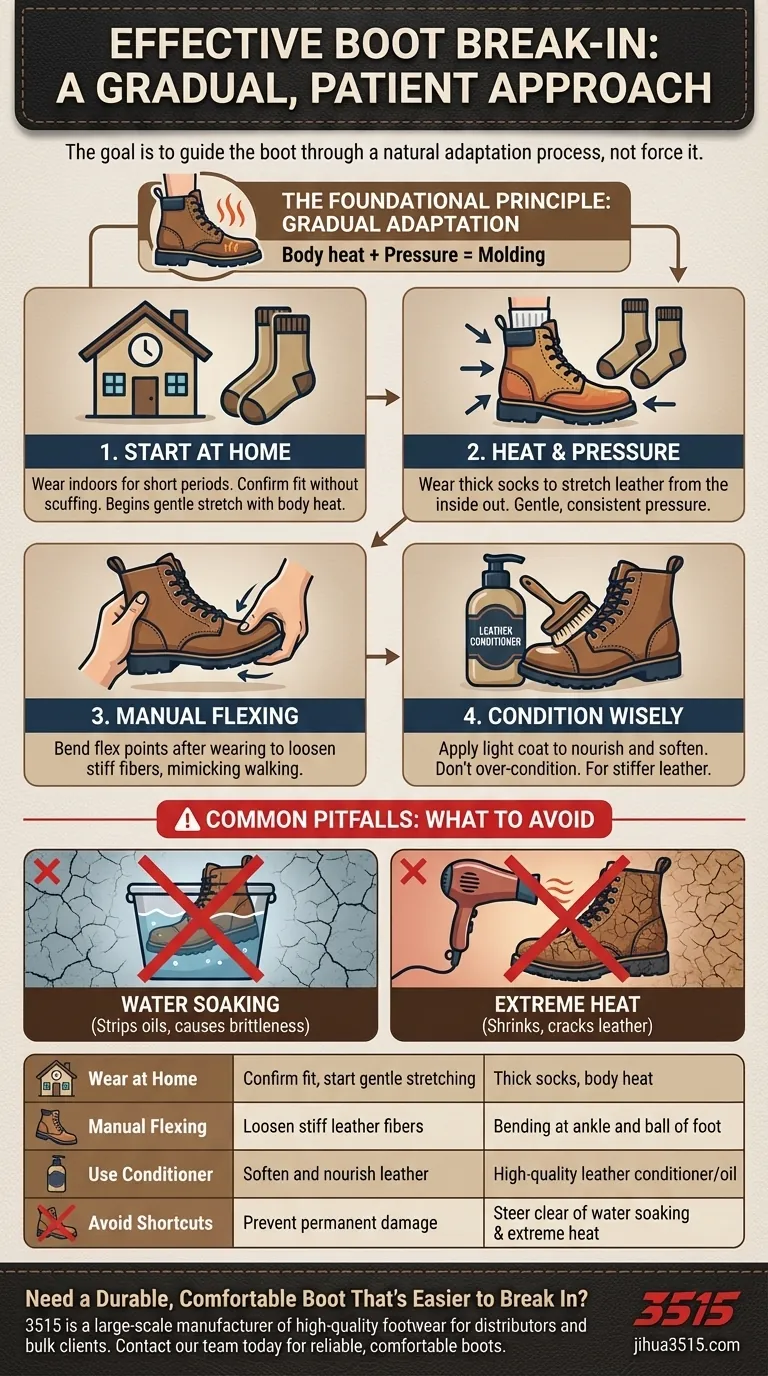
Related Products
- Safety Footwear Wholesale Manufacturer for Custom OEM/ODM Production
- Wholesale Safety Footwear Manufacturer for Bulk & Custom OEM Orders
- Premium Flame-Retardant Waterproof Safety Boots and Shoes
- Durable Goodyear Welt Leather Work Boots for Wholesale & Private Label
- Premium Wholesale Waterproof Safety Boots High Performance Protection for Industrial Markets
People Also Ask
- How do safety shoes contribute to cost savings for companies? A Strategic Investment in Risk and Cost Management
- Is it normal to wear shoes in the house? A Guide to Hygiene, Comfort & Culture
- How long can you wear safety boots? The Lifespan is Determined by Wear, Not Time
- Do snake bite boots work? Your Ultimate Guide to Effective Snake Bite Protection
- What cultural and environmental considerations are tied to wearing shoes indoors? Balance Hygiene, Tradition, and Foot Health


